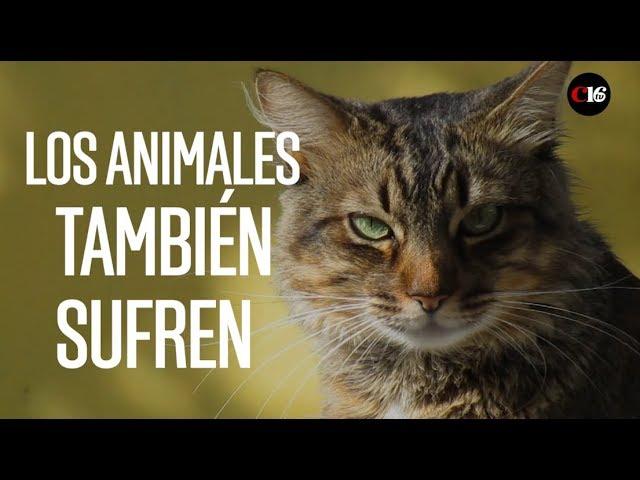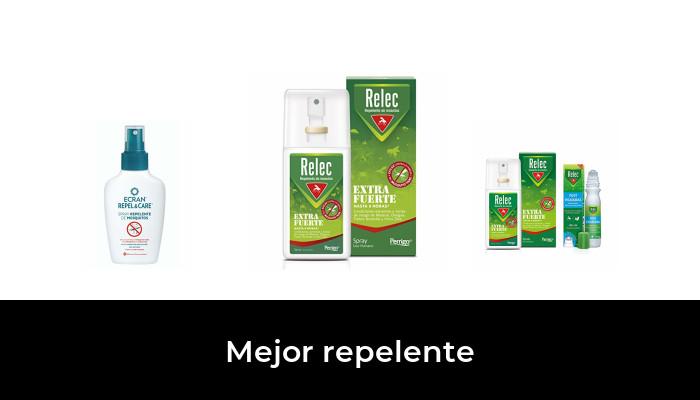Animals also suffer
Desde la Antigüedad, el ser humano ha tenido una relación paradójica con los animales. Unos han sido celebrados y hasta endiosados, otros se convirtieron en compañeros y mascotas, y muchos otros, la mayoría, han sido vistos como unmedio para un fin. Los animales pueden convertirse en comida, ser usados como medio de transporte, su piel sirve para fabricar ropa y hasta pueden servir de entretenimiento. Así, han sido explotados en muchas industrias y la mayoría de las veces sin consideración.
This idea of exploitation towards animals is what is known as "specism", a term coined in 1970. According to the Dictionary of the Royal Spanish Academy, specism is the "discrimination of animals because they consider them lower species" and "beliefaccording to which the human being is superior to the rest of the animals, and therefore can use them for their own benefit. ”
Precisely since the 70s, the movement for the defense of animals, thanks to the influence of works such as Animal Liberation of the Australian philosopher Peter Singer, began to gain weight worldwide and the idea of treating animals with ethicsAnd respect, even for eating them, caused governments to be interested in enacting laws for animal welfare.However, despite the laws and the great advance in the consciousness of the population, animals are still day -to -day the object of cruel practices that, in many cases, could be avoided.
Animal experimentation
Animal experimentation is one of the practices that generates the most controversy from the ethical point of view.It is estimated that up to 115 million animals are used in investigations ranging from cosmetics tests to biomedicine.Among the most used animals are mice, rats, fish, rabbits, guinea pigs, farm animals, dogs, cats and primates such as monkeys and chimpanzees worldwide.
Many scientists and experts defend that animal experimentation has been key to the development of medicine.In 2015, the Confederation of Scientific Societies of Spain (Cosce) launched a report in which it argued that animal experimentation had been crucial, for example, to identify the AIDS virus, produce antiretroviral therapies or develop the vaccine against the virus of the virusHuman Papilloma
However, organizations such as PETA (people for ethical treatment in animals) or The Humane Society International say that the animals used in laboratories are generally subjected to procedures that are considered cruel and anthiets as forced confinement,Electric discharges, drug administration, starvation, being burned, fired or poisoned, causing damage to their brain tissue or being genetically manipulated.Likewise, the usefulness of vivisection in educational centers has been questioned.
The pioneer
In the European Union, animal research is highly regulated.The 2010/63/EU directive aims to “increase the well -being of animals whose use is necessary for scientific research”.To do this, the legislation developed the principle of three R: replace, reduce and refine.That is, use cellular crops or computer simulations instead of animals when possible.As well as reduce the number of animals used to the strictly necessary and refine the methods to improve their well -being.
Likewise, animal experimentation is not available to anyone.In Europe, the scientist must write an experiment proposal precisely, including the number of necessary animals and the detail of the procedures to be used.This preliminary draft must go through three committees before approval: in the same research center, an external independent council and, in the case of Spain, the last word is the Ministry of Environment, Agriculture or Health of the Autonomous Communities.
The cruelty behind makeup

Although the usefulness of experimentation in animals for biomedicine is still debatable, in what seems to be more consensus is to prohibit the use of animals to test cosmetics.In the EU, Guatemala, Iceland, India, Israel, New Zealand, Norway, Serbia, Switzerland and Turkey the testing is prohibited.But it is still legal in 80% of the countries of the world, while China specifically requests the test in animals.For this reason many companies maintain that practice if they want to sell in the Asian giant.
The EU prohibited the use of animals in tests for cosmetic products in 2004 and for 2009, also for ingredients.While in 2013, it prohibited the commercialization of products that use animals to do their tests.A year ago the European Parliament adopted a resolution in which the elimination of animals in cosmetic industry is requested worldwide.
But, for now, these essays are still common.His victims are above all: mice, rats, pigs and rabbits.Among the most common practices, according to the Humane Society, are: to scrub chemicals in the eyes and skin without any anesthesia, forced feeding studies that last weeks to detect signs of disease or specific risks, and, finally, studies of"Lethal doses", in which animals must swallow large amounts of chemicals to determine what dose causes death.
Likewise, according to this same organization, it is very likely that at the end of the test the animals will be killed without any stunning.In the United States, and other countries, animals that are part of this type of tests are not included in official statistics and, therefore, do not have the protection of the Animal Welfare Law.
The suffering of the slaughterhouse
Another of the industries that has been in the eye of the hurricane for animal abuse has been meat.Without a doubt, what has come to light of the conditions of slaughterhouses and industrial farms, both in Spain and in the world, are stories and images of horror movies.From the sacrifice of pregnant cows to the slaughter of conscious animals, all practices prohibited by European and Spanish law are more common procedures than they should.Aitor Garmendia, author of after the walls, conducted an investigation of almost two years in which he photographed and documented what the animal's passage is like.
Garmendia denounces abuse ranging for animals in transport trucks between their own excrement and urine until the stunning methods are properly applied before killing animals.He also assures that in some slaughterhouses the presence of the veterinarian is not met to verify that all procedures are carried out legally.
Recently, a YouTube video published by the Equalia organization in which the animals of an Avila slaughterhouse were viral was viral.You can see how electrical discharges applied to the face of a cow, which fell into blows and palazos to the lambs and even the animals were slaughtered without stunning.Without a doubt, they are common practices worldwide and that can even get those within the system.Mauricio García Pereira, former employee of the municipal slaughterhouse of Limoges (France), which recently published the book Animal Maltrate, human suffering (Ed. Peninsula), collects in its report the torture suffered by animals that arrive every day at that place.
A horror story
García Pereira worked at the slaughterhouse from 2010 to 2016 and arrived through a temporary work company.Son of farmers, he didn't mind working with animals or blood.But, without a doubt, what he found was much stronger than he expected.“The first the smell.A smell of rot and shit, intense, almost unbearable.The smell of death ”, thus begins the story of his that reaches the climax of indignation when, beyond all the animals that were sacrificed every day, they were also killing pregnant cows.
«An afternoon of the year 2013, in the tripería, the workshop reached by the viscera, there is something that catches my attention (...).Suddenly there is a large pink pink bag before me;It does not resemble anything I have seen so far.She left the knife as I loose a blasphemy and palpate the huge bag, still hot.I shit on God!What is this?I have grown on a farm and I find it hard to believe what I see: Host Puta!A fetus! "He tells him in the book.
It is at that time that he starts taking photos, asking and documenting what he saw.And three years later, in 2016, he found a report on animal abuse that led him to want to tell his story.So he contacted the Animalist Association L214, who had made the documentary, and left him a camera to tell his story.In November of that year, the images came to light and it was a scandal in the Gallic country.However, it was a scandal with expiration date: one year.Now, according to sources of the slaughterhouse cited, everything remains the same.
The cost of leather coat
The fighting industry has been the cause of the suffering of foxes, minks and martas throughout history.The leather coat, which once was a status symbol, is now becoming a sign of cruelty.Numerous brands, among which are giants such as Gucci, Prada and Versace, have resigned to use skins.However, many other firms such as Off-White, Dior or Fendi remain regular to them.
Like slaughterhouses, the fighting industry is also not very transparent about its practices.The Human Society criticizes both the hunting of foxes and minks to the fighting farms, where they sacrifice the animals in just eight months and confine them to boxes of 1 meter and 70 centimeters.
More than 100 million animals are killed, according to estimates, including rabbits, to use their skin.From the sector, they argue in favor that the use of natural skins is much less polluting than that of Fauxfur or synthetic skin.Also, from the Spanish Fur Association defends that criticisms have been taken very seriously and works on farms to take care of animals as well as possible.
Reflection is necessary
However, for organizations, these statements are pure marketing and Greenwashing.Despite the regulations and public scandals to which many of the companies and companies have been submitted, in most cases there is no true penalty.Although members of the meat industry or the fight issue communications in which they say they will not continue carrying out procedures that damage animals, they continue to violate the norms, which even some animalists consider laxas, protected by their economic power.These are industries that move millions of dollars.
The debate about whether human beings must or may not use animals for their own benefit as soon as it begins.Without a doubt, the issue is not simple.But it could be considered by considering that if it is not necessary, why should pain to another living being that feels any human would be inflicted?If you have served animal experimentation, it is precisely to determine that mammals have homologous neuronal circuits and all are able to suffer.
From that point of view, using animals in scientific research, provided that it is justified and not cruel, at least it is done with the purpose of having a utility for humanity and for animals themselves, such as Ebola studiesIn primates.But knocking out a living animal just to make a leather coat, which will cost almost 8,000 euros, it is something perfectly avoidable.And if, finally, the animals will end on a plate of food, is it very different if that cow suffered in the slaughterhouse or was sacrificed with dignity?Is there really an ethical way of killing animals?Maybe the answers are not simple but at least, the questions must be asked.
Read more about this and other contents in the 2660 edition of change16
You can purchase it, in digital, digital subscription and total subscription.
Subscribe and apóyanos "for a more human, fair and regenerative world"
Thanks for reading change16.Your subscription will not only provide precise and truthful news, but will also contribute to the resurgence of journalism in Spain for the transformation of consciousness and society through personal growth, the defense of freedoms, democracies, social justice, conservationof the environment and biodiversity.
Since our operational income is subject to great pressure, their support can help us carry out the important work we do.If you can, support in return16 Thank you for your contribution!


![46 Best Eyebrow Tint in 2022 [Based on 59 Expert Opinions]](https://website-google-hk.oss-cn-hongkong.aliyuncs.com/drawing/article_results_6/2022/2/27/ed118fdf3947d2023236cbe413ad9041.jpeg)





![47 best antiage nutritive cream in 2022 [based on 326 reviews] 47 best antiage nutritive cream in 2022 [based on 326 reviews]](https://website-google-hk.oss-cn-hongkong.aliyuncs.com/drawing/article_results_6/2022/2/27/1918fc37c66ad30564173e69d9df88a0.jpeg)

